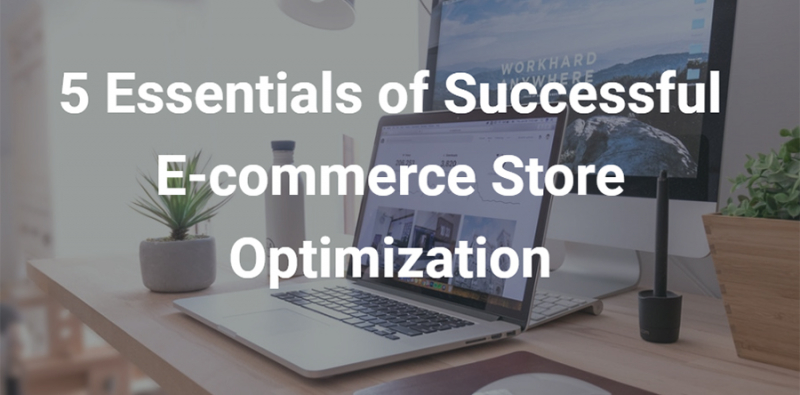Chances are your ecommerce store conversions are not yet up to the mark. There is always scope for improvement, and with the right amount of effort to improve some of the crucial aspects of your e-store, you can boost conversions, sales, and of course, profits. From design and UX optimization to landing page optimization, from building trust with shoppers to leveraging groundbreaking technologies for competitive edge – I will cover it all; read on.

Design and UX – The Backbone of Your Ecommerce Store
Your store’s design and UX are evolving – that’s an inconvenient truth you need to embrace. Here are some things to remember.
Keep on optimizing page load speeds: Anything more than 3 seconds in page load time can be catastrophic and the benchmarks are only going to become stricter. It’s estimated that for every 1 second delay in page loading, there’s 10% customer attrition.
Navigation: If they can’t find it, they can’t buy it. Avoid shallow categories, be flexible to add the same subcategory within multiple parent categories if necessary, and always use innovative categories like ‘what’s new’, ‘hot-sellers’, etc.
Looks matter: Whether it’s an ecommerce landing page or your ecommerce store blog, great visuals matter a lot. Expand your library of high quality stock images intended for commercial use, make sure you use image alt tags with product categories and product names as keywords, and resize the images before uploading (to avoid slowing down page loading).
Optimize E-store Product and Landing Pages
Ecommerce store product pages and landing pages are your bread and butter. Shower all the love you can on optimizing these pages. Because ecommerce landing pages and product pages follow a template, every incremental improvement you make can translate to every product page, delivering ample value.
- Granular searches, such as “Apple iPhone 8 64 GB Rose Gold” show purchase intent (as compared to generic searches like ‘iPhone 64 GB’); make sure your product pages are optimized for granular searches.
- Make sure you include the product name, brand, model number, color and size, and special features in the <title> tag of the landing page.
- Push your developers to create elegant, standards-compliant, and quick rendering codes that make landing pages load faster.
- Make all the page content spider-able (and make it worth crawling).
Avoiding Cart Abandonment
Shopping cart abandonment remains a challenge for many ecommerce stores; it’s estimated that close to 70% online carts are abandoned before purchase. To optimize your e-store checkout process, use this tips:
- Show how far the user has made it in the checkout process (example, page 1 out of 3).
- Reduce the number of pages a user crosses before purchase completion.
- Ensure shoppers know about product availability upfront.
- Remember the cart, so that those who abandon can resume their shopping sessions if they decide so.
- Leverage cart abandonment reminder emails.
Optimize The Trust Quotient of Your Ecommerce Website
In spite of the rapid leaps made by ecommerce, trust remains an issue for several prospective shoppers. This is where ecommerce store managers can do their bit to take control and communicate a sense of trust. Some of these practices are:
- Customer testimonials and product reviews can boost your sales; invest efforts in these directions.
- Look to present seals and certificates of security on your ecommerce product pages and payment pages.
- Offer limited period money back guarantee, 100% refunds, and reliable post-purchase support.
Stay In Sync With Groundbreaking Technologies
Because technology lifecycles are shrinking, brands can no longer stay on the fence and let the early adopter advantage of new and novel technologies slip by. New technologies needs to be adopted and above all they need to be delegated intelligently within your team to get the best results. In the days to come, ecommerce stores will need to ramp up their tech game to disrupt more markets and multiply revenues.
Chatbots are right up there in the tech transformation game for ecommerce. These natural language processing (NLP) and machine learning (ML) powered messenger apps can assist customers in product selection, steer and nudge them to complete transactions, answer commonly asked questions, and if needed, escalate the interaction to a human customer rep if needed.
Technologies like augmented reality (AR) and virtual reality (VR) might sound too futuristic for ecommerce store optimization, but the truth is that pioneering brands are already deploying them for gains. Thomas Cook, for instance, offers a 360-degrees navigable virtual travel experience to its website users. Marriott blends VR tech and creative marketing in its VR Postcards campaign. Alibaba has launches its very own VR research arm called GnomeMagic.
Concluding Remarks
Just a bit of optimization can translate into thousands of dollars in profits per month for your ecommerce store. With traffic to back you, all you need is a bit of optimization, and this guide helps you do just the right tweaks to maximize returns on your efforts.




